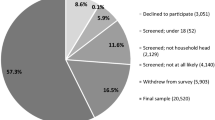Abstract
The paper deals with the decision-making process of the electric vehicle (EV) owners at the charging station. Firstly, the paper presents a theoretical basis for the definition of discrete choice systems. Consequently, the process of the stated preference survey design, used to obtain data about the EV owners’ decisions at the charging station, is presented. The SP survey consisted of 18 hypothetical scenarios and socio-demographic questions. The SP survey was carried out from July 2020 to October 2020, and 289 residents of Slovakia with an age higher than 18 (the threshold necessary for a driving license) have taken part. This results in a sample of 5192 different responses. Based on the obtained data, the EV owners’ behavior prediction model is defined and its parameters are estimated using the maximum likelihood estimation method and 90% of the sample data. Furthermore, the presented model is validated with the rest of the sample data and recommendations for future work are defined.


Similar content being viewed by others
References
Liao F, Molin E, van Wee B (2017) Consumer preferences for electric vehicles: a literature review. Transp Re 37(3):252–275. https://doi.org/10.1080/01441647.2016.1230794
Noel L, Carrone AP, Jensen AF, Zarazua de Rubens G, Kester J, Sovacool BK (2019) Willingness to pay for electric vehicles and vehicle-to-grid applications: a Nordic choice experiment. Energy Econ 78:525–534. https://doi.org/10.1016/j.eneco.2018.12.014
Sovacool BK, Kester J, Noel L, Zarazua de Rubens G (2019) Income, political affiliation, urbanism and geography in stated preferences for electric vehicles (EVs) and vehicle-to-grid (V2G) technologies in Northern Europe. J Transp Geogr 78:214–229. https://doi.org/10.1016/j.jtrangeo.2019.06.006
Parsons GR, Hidrue MK, Kempton W, Gardner MP Can vehicle-to-grid revenue help electric vehicles on the market?, Working paper series, Working paper no. 2011–21, University of Delaware
Kormos Ch, Axsen J, Long Z, Goldberg S (2019) Latent demand for zero-emissions vehicles in Canada (Part 2): insights from a stated choice experiment. Transp Res Part D Transp Environ 67:685–702. https://doi.org/10.1016/j.trd.2018.10.010
U. S. Department of Energy (2017)National plug-in electric vehicle infrastructure analysis, available at: https://www.nrel.gov/docs/fy17osti/69031.pdf
Ardakanian O, Keshav S, Rosenber C (2014) Real-time distributed control for smart electric vehicle chargers: from a static to a dynamic study. IEEE Trans Smart Grid 5(5):2295–2305
Xydas E et al (2016) A data-driven approach for characterising the charging demand of electric vehicles: a UK case study. Appli Energy 162:763–771
Lopes JAP, Soares F. Almeida PR, Moreira de Silva M (2009) Smart charging strategies for electric vehicles: enhancing grid performance and maximizing the use of variable renewable energy resources In: EVS 24 international battery, hybrid and fuel cell electric vehicle symposium
Sovacool BK, Axsen J, Kempton W (2017) The future promise of vehicle-to-grid (V2G) Integration: a Sociotechnical review and research Agenda. Annu Rev Environ Resour 42(1):377–406
dell’Olio L, Ibeas A, de Ona J, de Ona R (2018) Designing a survey for public transport users. Elsevier, Public Transportation Quality of Service, pp 49–61
Yang Y, Yao E, Yang Z, Zhang R (2016) Modeling the charging and route choice behavior of BEV drivers. Transp Res Part C Emerg Technol 65:190–204. https://doi.org/10.1016/j.trc.2015.09.008
Helmus JR, Lees MH, van den Hoed R (2020) A data driven typology of electric vehicle user types and charging sessions. Transp Res Part C Emerg Technol 115:102637. https://doi.org/10.1016/j.trc.2020.102637
Pan L, Yao E, MacKenzie D (2019) Modeling EV charging choice considering risk attitudes and attribute non-attendance. Transp Res Part C Emerg Technol 102:60–72. https://doi.org/10.1016/j.trc.2019.03.007
Will Ch, Schuller A (2016) Understanding user acceptance factors of electric vehicle smart charging. Transp Res Part C Emerg Technol 71:198–214. https://doi.org/10.1016/j.trc.2016.07.006
Daina N et al (2017) Electric vehicle charging choices: Modelling and implications for smart charging services. J Transp Res Part C 81:36–56
Kajanova M, Bracinik P, Roch M (2020) A decision-making process in a vehicle to grid concept. TELEKTRO, Taormina, Italy, pp 1–4
McFadden D Econometric models of probabilistic choice, available at: https://eml.berkeley.edu/~mcfadden/discrete/ch5.pdf
Train K (2002) Discrete choice methods with simulation, Cambridge University Press, available at: https://eml.berkeley.edu/books/train1201.pdf
Koppelman F, Bhat CH A self instructing course in mode choice modeling: multinomial and nested logit models, available at: http://www.caee.utexas.edu/prof/bhat/courses/lm_draft_060131final-060630.pdf
Greco S, Matarazzo B, Slowinski R (2001) Rough sets theory for multicriteria decision analysis. Eur J Oper Res 129(1):1–47
Keeney RL, Raiffa H (1976) Decisions with multiple objectives: preferences and value tradeoffs. Wiley, New York
The total number of registered vehicles in Slovakia, available at: https://www.minv.sk/?celkovy-pocet-evidovanych-vozidiel-v-sr
Greenway’s pricelist, available at: https://greenway.sk/wp-content/uploads/2019/01/GWSK-Cennik-Jan-2019.pdf
Akaichi F Discrete choice experiments, SRUC
Aizaki H, Nishimura K (2008) Design and Analysis of choice experiments using R: a brief introduction. Agric Inf Res 17(2):86–94
Fedorov VV (1972) Theory of optimal experiments (review). Biometrika 59(3):697–698
Bierlaire M (2016) PythonBiogeme: a short introduction, Report TRANSP-OR 160706 ,Series on Biogeme, Transport and Mobility Laboratory, School of Architecture, Civil and Environmental Engineering, Ecole Polytechnique Fédérale de Lausanne, Switzerland
Pickles A (1985) An introduction to likelihood analysis. W. H. Hutchins & Sons, Norwich, pp 24–27
Dekking FM et al (2005) A modern introduction to probability and statistics: understanding why and how. Springer
Funding
This work was supported by Grant System of University of Zilina No. 1/2020. (8023).
Author information
Authors and Affiliations
Corresponding author
Additional information
Publisher's Note
Springer Nature remains neutral with regard to jurisdictional claims in published maps and institutional affiliations.
Rights and permissions
About this article
Cite this article
Kajanova, M., Bracinik, P. & Belány, P. Analysis of the discrete choice model representing the electric vehicle owners’ behavior in Slovakia. Electr Eng 104, 131–141 (2022). https://doi.org/10.1007/s00202-021-01255-z
Received:
Accepted:
Published:
Issue Date:
DOI: https://doi.org/10.1007/s00202-021-01255-z




